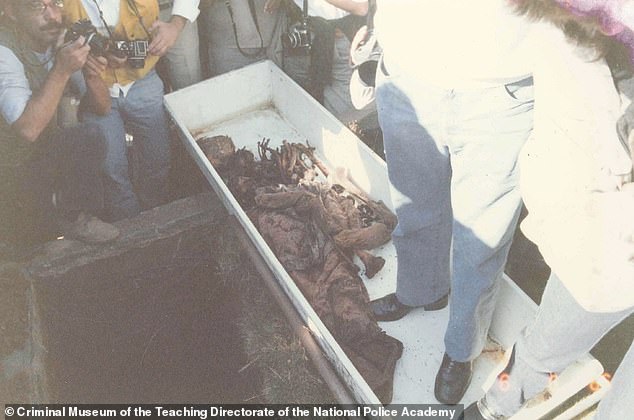Surrounded by photographers and locals, you can see what is believed to be the bones of one of the most persecuted Nazis in the world being lifted from the ground.
Could Josef Mengele – the famous “Angel of Death” who conducted horrific experiments on Jewish prisoners at the Auschwitz death camp – really have been dead for years, despite a decades-long international persecution?
That was the belief in June 1985, when intelligence provided by German police led authorities to open an overgrown grave in a small cemetery in the city of Embu, 27 kilometers from Sao Paulo.
Images never seen before in the UK showed bones and shreds of clothing being taken out and placed on a long metal tray in front of hundreds of spectators.
José Antonio, the director of the morgue where his remains were taken for analysis, held up his skull for everyone to see.
Mengele was buried under the assumed name Wolfgang Gerhard, the identity he had been using for almost a decade.
The images are revealed in the new book Hiding Mengele: How a Nazi Network Harbored The Angel of Death, by Brazilian author Betina Anton.
The remains of the famous “Angel of Death”, Josef Mengele, are seen being lifted from the ground in a small cemetery in the city of Embu, 17 miles from Sao Paulo, in June 1985.
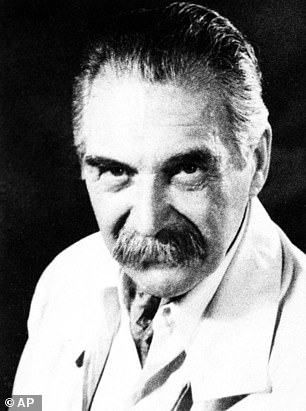
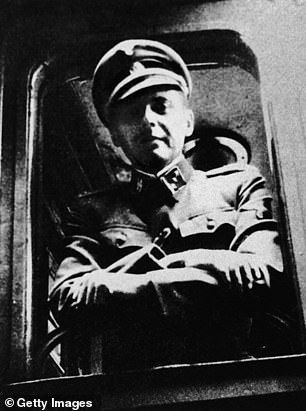
Mengele was buried under the assumed name Wolfgang Gerhard, the identity he had been using for almost a decade. Above: Mengele photographed while living under his assumed identity (left); Standing at a train window in his SS uniform, 1945 (right)
It tells how Mengele secretly fled Germany four years after the Nazis’ defeat in World War II.
After arriving in South America, he was protected by a network of fellow European immigrants.
He spent the last two decades of his life in Brazil, where he died of a heart attack at the age of 67 in 1979 while swimming at the Bertioga resort.
Forensic tests concluded that the exhumed remains were most likely those of Mengele.
Mengele’s son, Rolf, said a few days after the exhumation that the bones were those of his father.
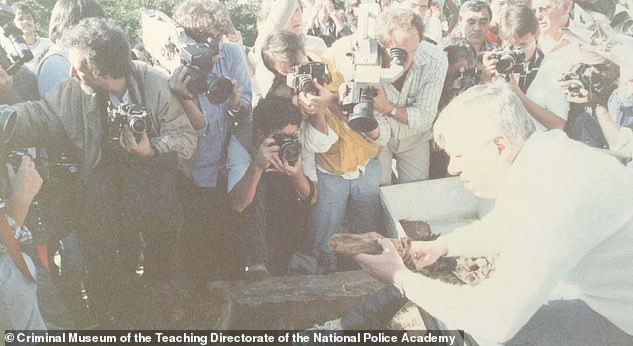
A bone is raised from the grave that contained the remains of Nazi “Angel of Death” Josef Mengele. This image has never been published in the UK.
Nazi hunter Simon Wiesenthal wondered at the time why his family had not announced his death six years earlier.
Rolf Mengele said the family remained silent to avoid endangering those who had been sheltering him.
In a statement, he expressed his “deepest condolences” for his father’s victims.
DNA tests conducted in 1992 provided definitive confirmation.
Mengele had lived the last years of his life as a quiet old man who avoided talking about the war.
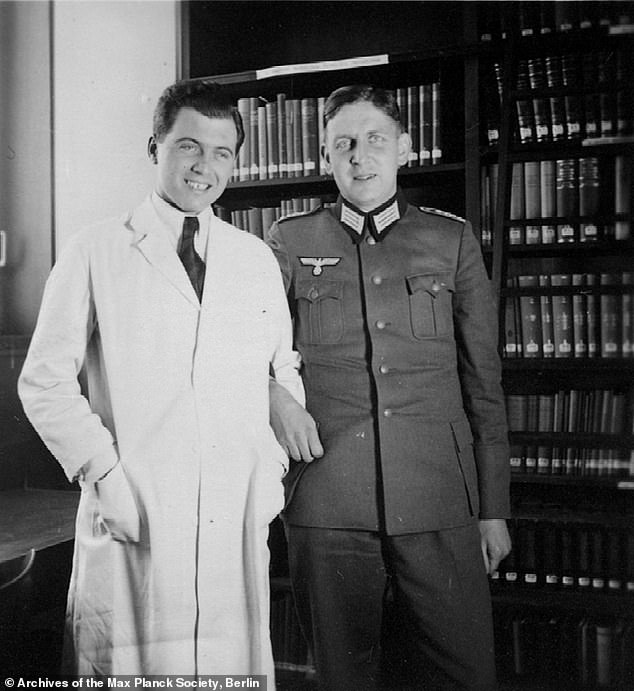
Mengele with the Nazi geneticist Hans Grebe. Mengele was known for his medical experiments on twins at Auschwitz. He is credited with the deaths of some 400,000 Jews.
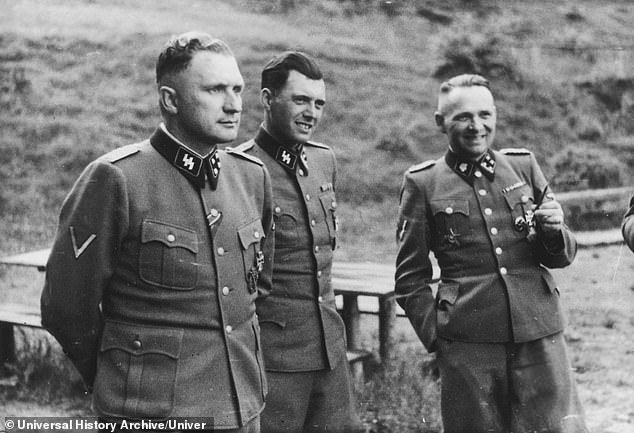
Mengele (center) seen with Auschwitz commander Richard Baer (left) and former commander Rudolf Hoess on the SS retreat grounds outside Auschwitz, 1944
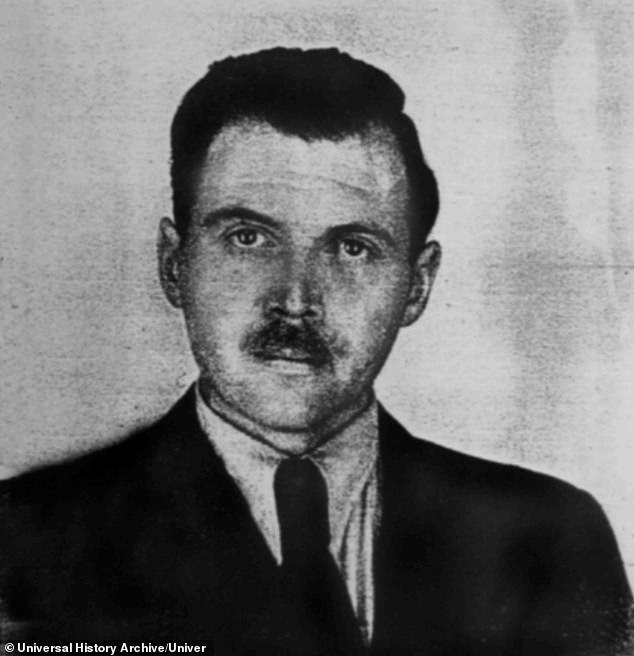
A photograph taken by a police photographer in Buenos Aires in 1956, for Mengele’s Argentine identification document.
He was said to love classical music and had dinner once a week in a modest restaurant.
At the time of the 1985 exhumation, Nazi hunters were skeptical that one of the biggest manhunts in history had finally come to an end.
His funeral had been quickly and quietly arranged under the assumed name he had been using since 1971.
Mengele was known for his medical experiments on twins at Auschwitz. He is credited with the deaths of some 400,000 Jews.
The doctor was said to enjoy the procedures, even though he often inflicted immense pain and suffering on his victims.
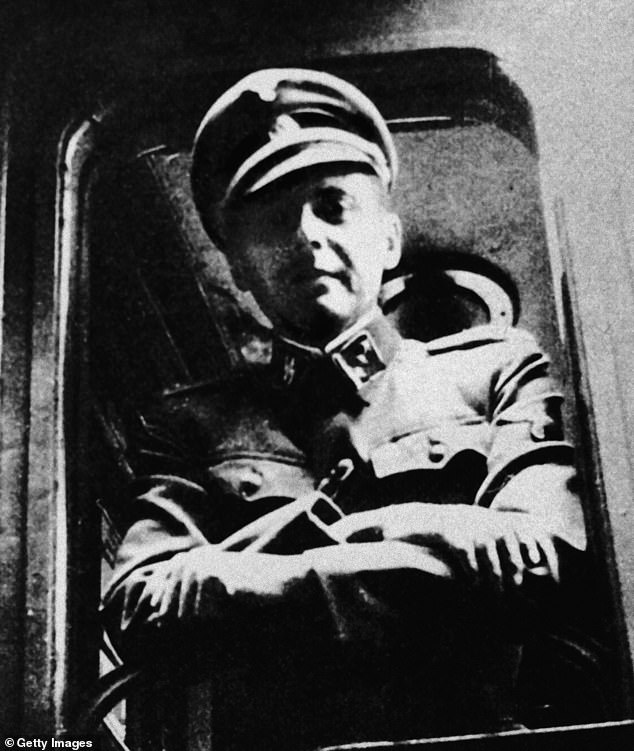
Mengele was buried under the assumed name Wolfgang Gerhard, the identity he had been using for almost a decade. Above: Mengele photographed while living under his assumed identity (left); Standing at a train window in his SS uniform, 1945 (right)
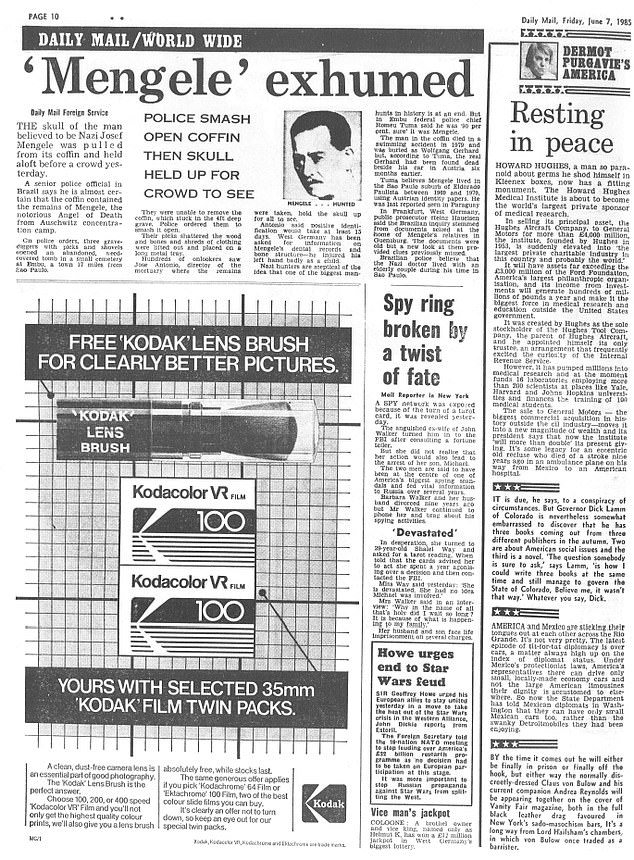
The original Daily Mail report on the exhumation of Mengle’s remains

The Daily Mail front page of June 8, 1985, when a photograph of Mangele living as Wolfgang Gerhard was published.
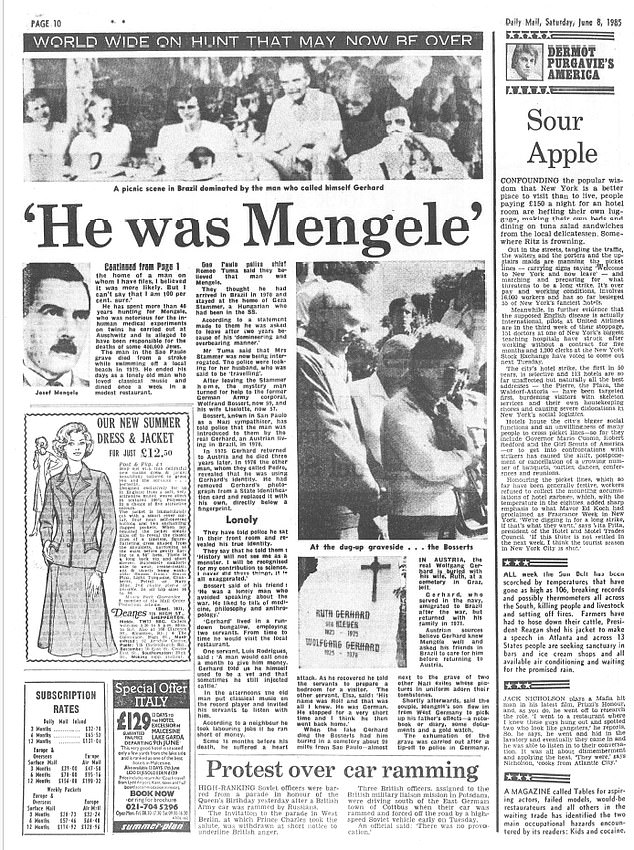
Mail report from June 1985, after Mengele’s body was exhumed and his false identity revealed
He was particularly interested in twins and people with diseases such as dwarfism.
Mrs. Anton, who is Brazilian, reveals how Mengele was taken in by kindergarten teacher Liselotte Bossert and her husband Wolfram.
The author herself was taught by Bossert.
Mengele lived with the teacher, her husband and their two children – who called him ‘Uncle Peter’ – in their house in the Brooklin neighborhood of São Paulo for 10 years.
The family enjoyed barbecues and visits to the beach, even as the Mossad – Israel’s feared intelligence service – led international efforts to find him.


